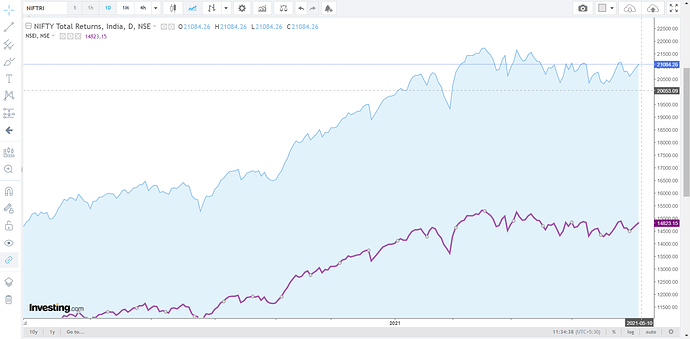SBI Nifty 50 ETF did recently make an exception and directly paid out 3 dividends of Rs. 1.3 (Notice 1, Notice 2, Notice 3). This was done so that EPFO could realize some of the gains but as dividends are now taxable in the hands of the shareholders, this will lead to higher tax outgo for people holding these ETFs -
Even if the dividends are paid out in the form of units instead of cash, TDS/taxes will still apply. This happens in the case of LiquidBees ETF -
Giving dividends in the form of cash or units likely isn’t tax-efficient any longer due to dividends being taxed at slab rates starting from FY 2020-21.
Also, ETFs track the Total Return Index (TRI) variant of the underlying index they are benchmarked against. Like the SBI Nifty 50 ETF follows the Nifty 50 TRI -
The TRI variant accounts for dividends paid by the underlying stocks. This can be seen when comparing the value of Nifty 50 Index vs the Nifty 50 TRI Index (Source - Investing.com) -
The 6000 point difference between the index and the TRI variant is due to the dividend being accounted for by the Total Return Index. This is mentioned in the Scheme Information Document of another Nifty ETF (NiftyBees - Page 28) -
TRI - Total Returns Index reflects the returns on the index arising from (a) constituent stock price movements and (b) dividend receipts from constituent index stocks.
Lastly, from what I am to understand, as the ETFs are benchmarked against the TRI variant which already accounts for the dividends, the dividend that is received from the underlying stocks is only used to create additional units of the ETF when its re-invested back. I am not completely clear/sure about this, so feel free to correct me.

